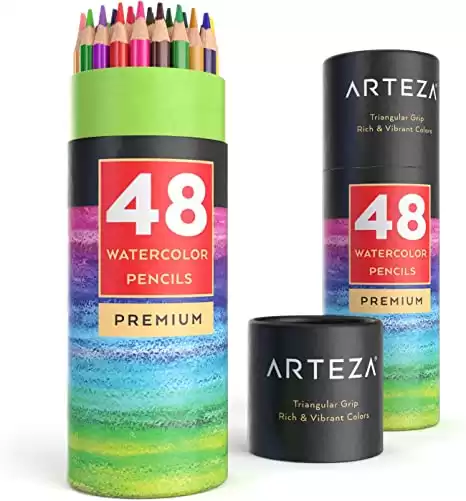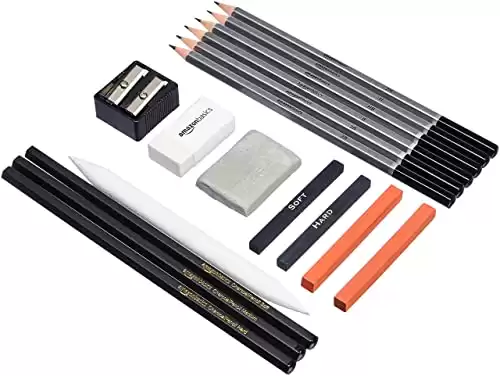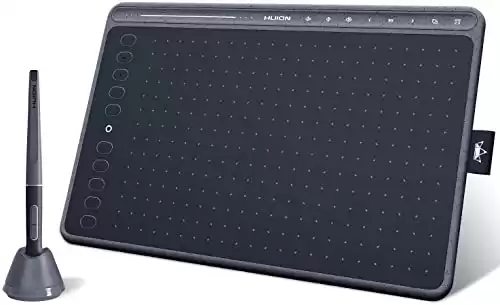While I love kids’ turkey crafts and art projects, I decided that, rather than contribute to the copious number of that type of art, I wanted to offer a more realistic turkey for you to draw. For tutorials, I do all the work in Photoshop with a Huion drawing tablet. It makes it easier to separate each step because I can work in layers. If you’re doing this digitally, use layers. Aside from the magic “undo” button, layers are one of the biggest contributions Photoshop made to digital art. However, if you prefer paper (which I certainly do most of the time), sketch each step lightly. You’ll need to be able to erase and adjust lines that need a little improvement.
Wild North American turkeys are very intelligent and actually have better color vision than we humans. They’re completely different than the commercially raised version. These birds are crafty and always on the lookout for a predator, yet much of that caution goes out the window during mating season. While the females are drab-colored and camouflage astonishingly well for such a large bird, the males stand out. A lot. They have a fabulous mating display that might even rival a peacock’s.
Supplies
| Supplies | Reason for Preference |
|---|---|
| Drawing paper | Use your favorite paper, but thicker sheets are preferable to thinner. My favorites are Bristol smooth and vellum. However, I know many people who prefer a more textured surface than those. |
| Drawing pencils | Don’t spend a ton on these. Inexpensive drawing sets from Amazon or a dollar store will be fine. |
| Watercolor or colored pencils | Black, brown, dark reddish brown (mahogany or the like), tan, red, blue, cream |
| Erasers | Putty-type erasers that you can mold and standard rubber erasers. |
| Blending stumps or blending pencils | These are precise, and I like that; however, you could also use q-tips or your finger. |
| White gel pen or pencil | White pencils and gel pens are great for highlighting things at the end. |
| Watercolor paint brushes | I would use a smaller round brush on this because of all the little details. |
1 – Structure & Outlines

Start your drawing with a few basic shapes. I used two overlapping circles for the body and tail, then add space for the wings and head. To me, male turkeys in full mating display look like several overlapping circles – sort of like bubbles that stuck together.

Next, create an outline using the basic shapes as your guide. Add his snood that hangs down over his beak and his wattles that dangle from his neck.
Feel free to find reference photos of turkeys to give you more information on their overall appearance. Studying them, even if it’s only photos and videos, will give you a much better idea of how to draw them.
Digital artists: Do this in a new layer. You’ll be able to remove the basic shapes easily.
Paper artists: Sketch right on over the shapes, but do it lightly so you can erase and adjust.
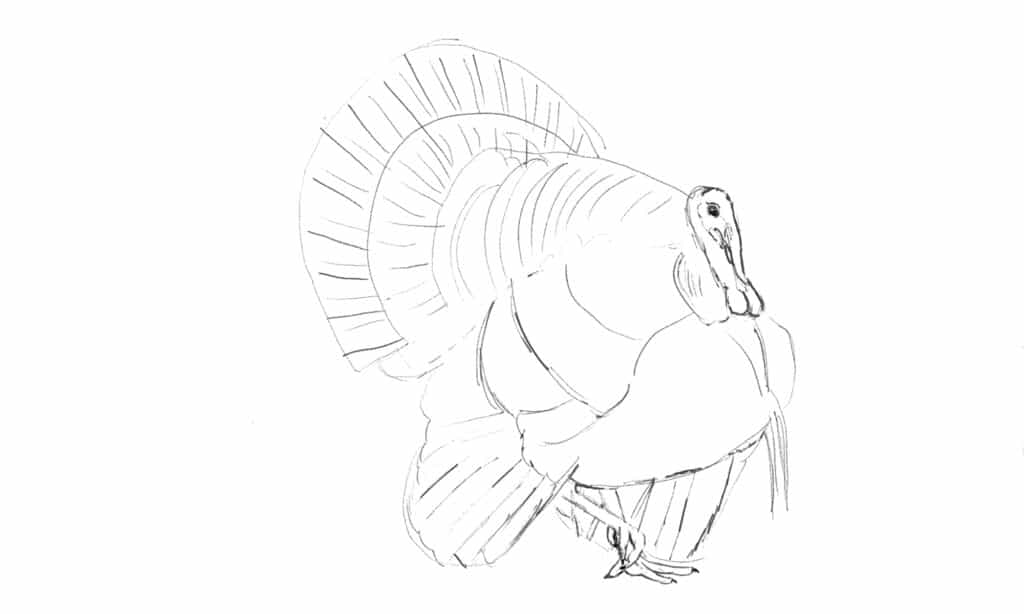
Take a moment to erase or delete the basic shapes you drew initially; you can even go over your original sketch with your pencil.
At this point, you should have a nice, clean outline to work with. Much of it will still get erased, deleted, or blended into the final drawing.
2 – Base Color
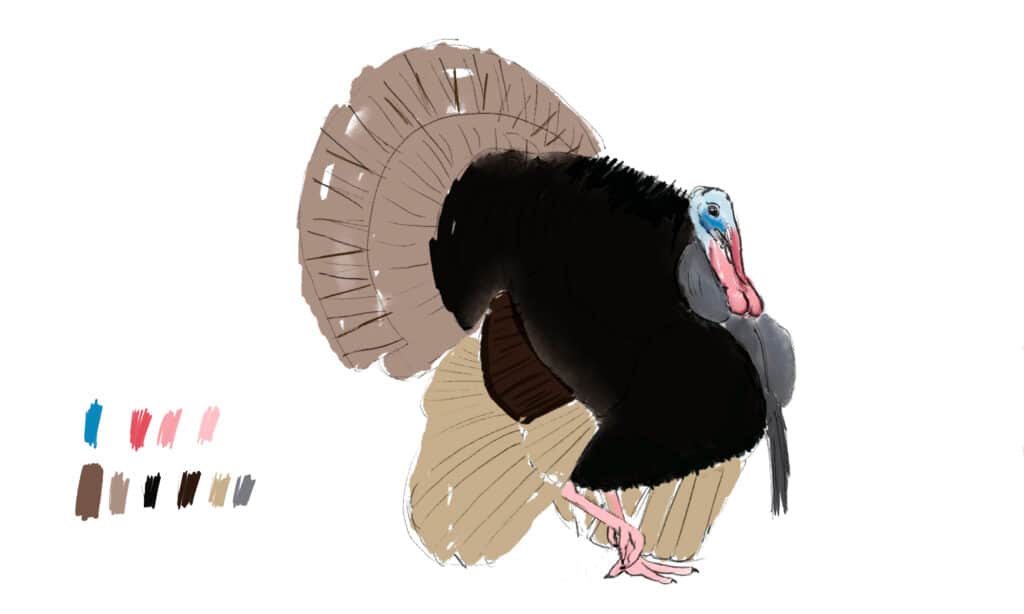
Wild turkeys, unlike their commercially raised cousins, are beautiful. The females are large, drab-colored but elegant birds, and the males are something to behold. Much like peafowl and other avian males, turkey toms have huge multi-colored displays of feathery greatness. Their whole purpose in life seems to be to attract a female and make babies.
To that end, turkeys spread their tail and wing feathers, puff out their chests and backs, and have brightly-colored heads, snoods, and wattles. Keep this in mind as you color your turkey.
Digital artists: I created a color palette to the left of the drawing. When I’m working with more than a couple of colors, I do something like this in Photoshop. If I forget to do it, I wind up with colors that aren’t quite the same as I originally intended. Do it in a separate layer so you can either hide it or delete it when you’re through.
Paper artists: A few notes: First, leave some space in the black sections near the tail. You’ll need it in a minute.
Second, consider taking a moment to create a color palette for yourself on a separate piece of paper. For each color, create a light, medium, and dark gradient. This way, you’ll better understand how each color will behave in different densities.
Third, I did not use watercolor pencils in my paper drawing. I feel like some of the really sharp details get lost in watercolor, and this turkey deserves better.
3 – Adding Detail

It’s time to start making this turkey look like a turkey instead of a blob with a beak.
Start with the tail because it’s on the left side of the turkey drawing, and I’m right-handed. You may want to start on the other side if you are left-handed. It’s a habit I got into when I learned to draw on paper because it keeps me from smearing things. Granted, if you’re using a computer for this, it’s not necessary; it is, however, helpful because if you ever draw on paper, your drawing won’t get smudged up weirdly.
Before adding the crazy color patterns, I color in the solid blocks. Turkeys have creamy-white fringe on their tail and some of the surrounding feathers. If you start here, the other details are easier.
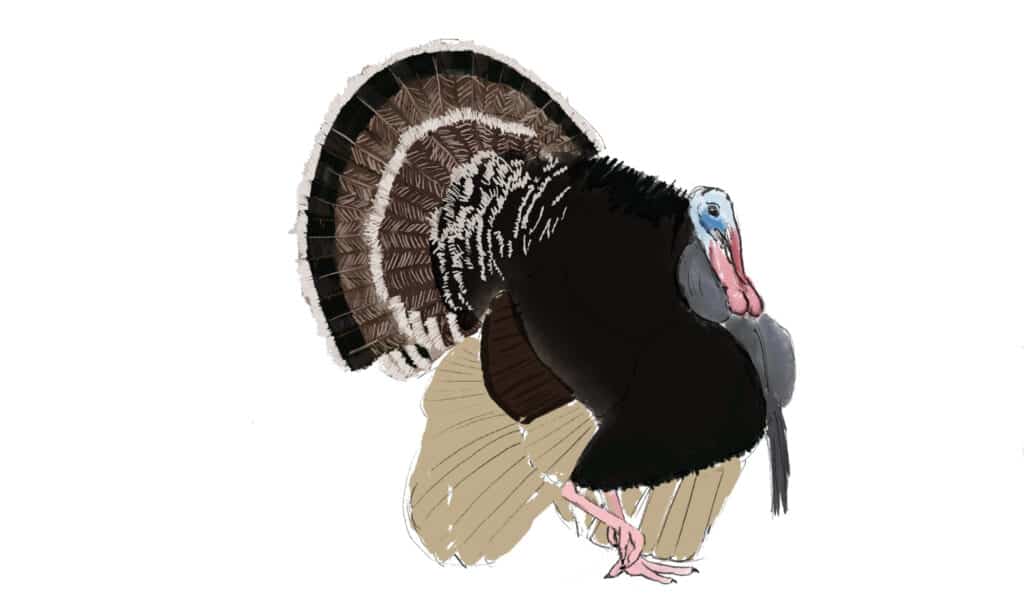
Next, fill in the patterns on the feathers. They sort of go at angles from the center of each feather, and it’s really hard to see where one feather ends and the next begins.
Take a look along the top of your turkey drawing’s back. The feathers there are also puffed up and sticking out; they don’t lie flat. Erase the outline in that area and create a sort of jagged edge to the black.

To add the black edging to the wings, color along the leading (front) edge of each feather, then push with your pencil (or stylus) towards the trailing edge of each feather. The end result should have a mostly solid black/dark brown leading edge and a broken trailing edge of brown with brown and black/dark brown streaks.
I feel like this is the hardest part of the details; getting the wing feather patterns right was challenging, and I redid it more times than I care to count.
Digital artists: This is one area where I used several layers. I grouped them according to tail and wings.
Paper artists: You may want to experiment with the wing and feather details on a separate piece of paper. While it’s not the end of the world if you have to start over, it is frustrating. Practice the hard stuff separately from the main drawing.
4 – Adding Shape
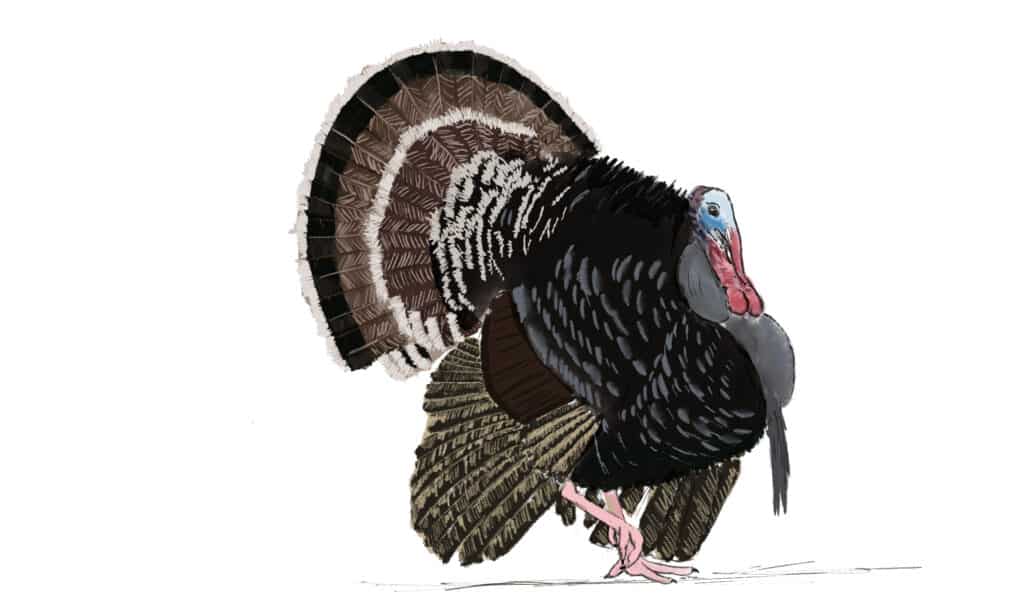
All those black body feathers get fluffed out too. Adding detail and shape to black fur and feathers is harder than it is in lighter colors. There are a few reasons for this, but one of the biggest is simply light. Black doesn’t reflect light unless it’s really glossy, and then only if the light is strong enough. Another reason is that we tend to start with lighter colors and add darkness for shadows; black is a shadow.
In this case, the turkey in our drawing has a body full of black feathers that he’s puffed out to try to attract a mate. Fortunately for us, the light is coming from the upper right side of the drawing, hitting those puffed-out black feathers right on the edges.
The end result of this should be that the feather edges stick out dramatically and seem to fade away into the body.
Digital artists: Create a new layer and add medium gray feather edges in a roughly circular pattern. Blend the edges into the black, giving the impression of edges in the light and the rest in shadow.
Paper artists: Use a white pencil and create the feather edges. Create a clean outer edge and blend the inside edge into the body.
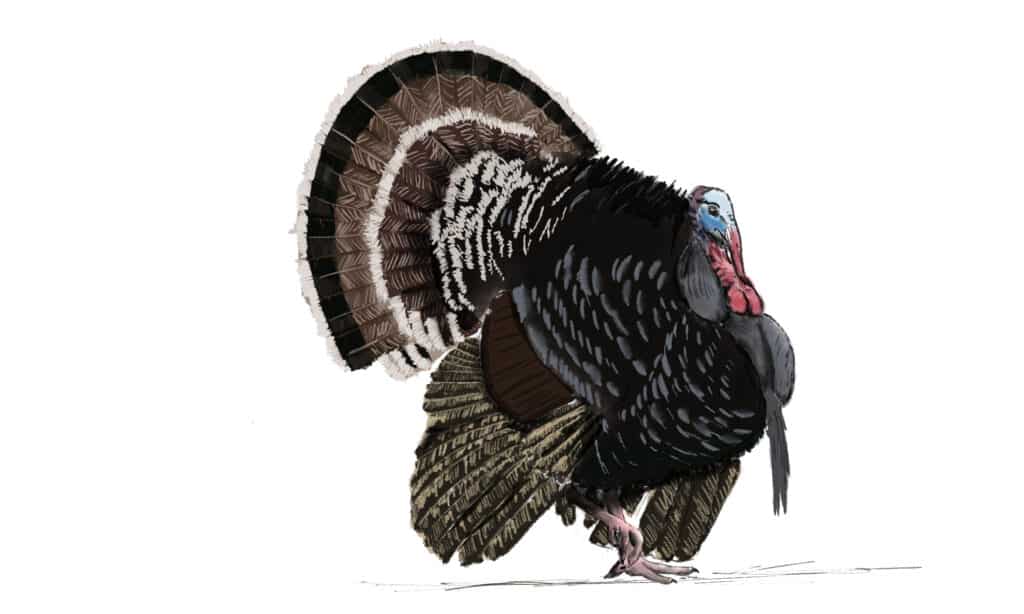
Keep in mind where the light source comes from – the upper right side. The shadows in your turkey drawing will be wherever one feather is blocking light from hitting another feather.
Shade the tail around the edges of the short feathers and feet. Then look around for anything else that needs shape. His head, snood, and wattles need shading, as does his breast right below the wattles.
Take your time. A dozen little spots will benefit from some shading, so analyze the drawing carefully and take the time to compare yours to a photo.
5 – Highlights
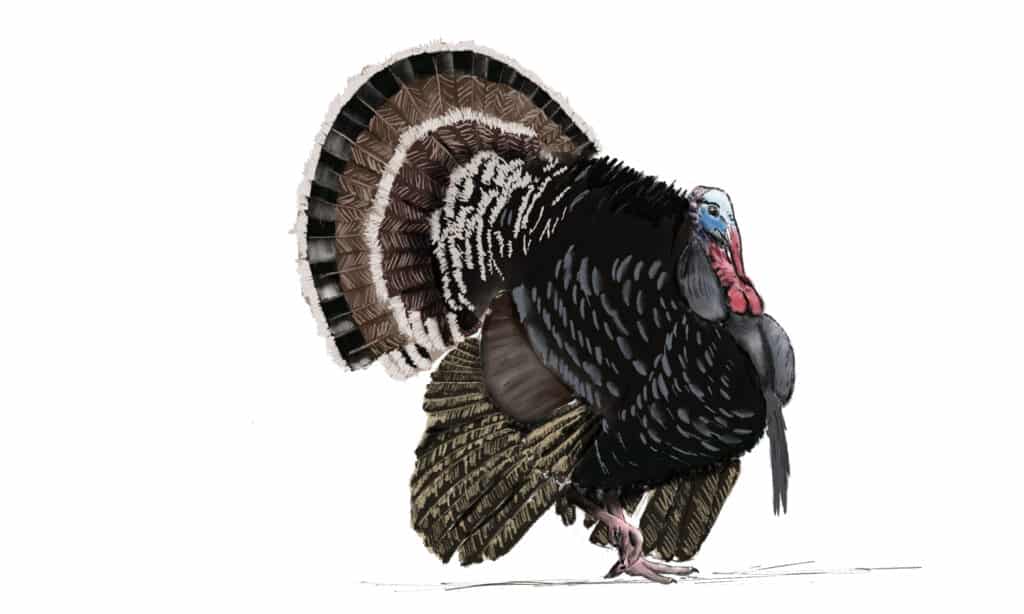
Finally, we have the highlights. He’s facing toward the sun. Remember that it’s above and to the right, so anything exposed to the sun will have at least a little highlighting. The outer dark band of his tail, the burgundy/brown feathers just above his wings, the top of his head, and his feet need a bit.
Add white to those areas and soften the edges. A harder edge works well if it’s a really shiny part of his feathers, bald blue head, or feet. However, soften the highlight edge a little more if it looks softer, like the breast feathers.
Digital artists: Create a new layer and use white. Draw it in the areas that need highlights, then use a blending brush to take care of the edges.
Paper artists: Depending on your preferences, you can either use a moldable eraser to pull away the colored pencil or a white pencil. Experiment to find what works best for you.
6 – Final Notes

After letting the turkey drawing sit for a couple of days, I returned and took another look. I decided that a shadow on the ground would be helpful and softened the edges of the highlights in a couple of areas.
One thing, either as an artist or a writer, your brain needs a break. You become so enmeshed in your work that you don’t see problems that would otherwise be clearly visible to you.
- 157 lb. paper with neutral pH
- Sturdy, 2-ply paper with smooth rendering surface
- Perfect for pencil, pen, dry brush, and other mediums
- 11" x 14"
- Made in the USA
- Includes 48 artist-grade colored pencils
- Highly pigmented
- Water-soluble
- Unique triangular design makes these pre-sharpened watercolor pencils easier to hold and control
- Break-resistant
- Pack of 6
- Kneaded rubber/gummy erasers
- Erases and/or lightens most dry media
- Also helpful for blending, highlighting, shading, smoothing, correcting, and brightening drawings
- Easy to clean by kneading between your fingers
- Designed for artists of all skill levels
- 17-piece set includes pencils, charcoal pencils, compressed sketch sticks
- Also includes a standard eraser, a kneaded eraser, a blender/smudge stick, and a dual-barrel sharpener
- Allows artists to experiment and combine different techniques
- Budget-friendly
- Set of 2
- Add a pop of milky white color to any artwork
- Features smooth gel ink
- Works equally well on light or dark-colored paper
- Latex-free grip for comfortable drawing
- This is the first graphics tablet equipped with 8 multimedia keys
- The multimedia keys are intuitive and can be used for a variety of artistic needs
- Can be connected with Android 6.0 (or later) phones or tablets via an adapter
- Battery-free stylus doesn't require a battery or charger
- Sleek and slim design available in 3 colors?
- Wear on either hand
- Prevents smudges from your hand transferring to your tablet
- Comfortable, soft, Lycra and Nylon
- Flexible
- Black
The photo featured at the top of this post is ©
Thank you for reading! Have some feedback for us? Contact the AZ Animals editorial team.




